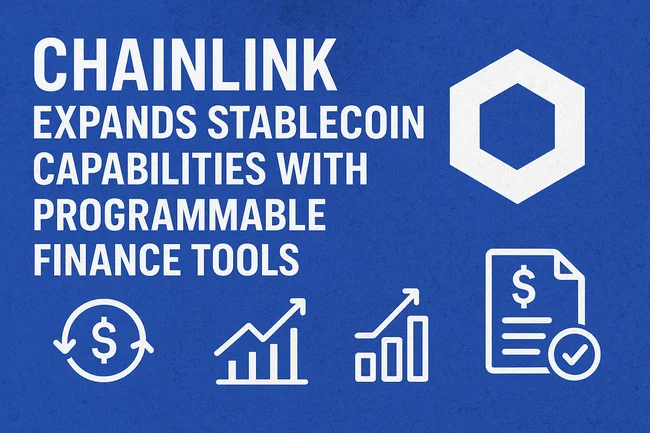Chainlink has outlined new ways stablecoins can be used in global finance, unveiling applications that allow the digital assets to function as programmable money capable of responding to market conditions in real time.
The blockchain services provider highlighted use cases such as automated foreign exchange settlements, portfolio rebalancing, and bond coupon payments. The goal, according to the announcement, is to enable stablecoins to act as building blocks for financial transactions that can be executed without manual intervention.
Chainlink unlocks the full potential of stablecoins, transforming them into programmable money that can dynamically respond to markets, events, and conditions:
— Chainlink (@chainlink) September 26, 2025
1. Real-time FX settlements
If a target exchange rate is reached, a smart contract initiates the stablecoin transfer… pic.twitter.com/zcJ9gj8hYe
Automated Settlements and Currency Transfers
One of the key applications described involves real-time foreign exchange settlements. If a target exchange rate is met, a smart contract can automatically initiate a stablecoin transfer. The exchange rate is verified through Chainlink’s price feeds, allowing cross-border transactions to occur without direct oversight.
This automation aims to reduce settlement delays and the need for intermediaries in international transfers. It also reflects growing interest in using stablecoins to streamline cross-border payments, which remain heavily dependent on correspondent banking networks.
Portfolio Management and Bond Payments
Another potential application focuses on investment strategies. Portfolios requiring a specific balance between stablecoins and tokenised growth assets could be rebalanced automatically. This would be facilitated by Chainlink’s Cross-Chain Interoperability Protocol, which enables transfers across different blockchain networks.
In addition, Chainlink pointed to the bond market as another area where automation could apply. Tokenised bonds could use smart contracts to distribute coupon payments directly in stablecoins to holders on the specified dates. These transactions would be coordinated through the Chainlink Runtime Environment, the company’s infrastructure for managing automated operations.
Broader Role for Stablecoins
The announcement underscores the continuing evolution of stablecoins from being primarily a store of digital value to a tool for programmable finance. Analysts say such functions could strengthen the role of stablecoins in areas including capital markets and institutional finance, though large-scale adoption would depend on regulatory clarity and integration with existing financial systems.
Stablecoins, typically pegged to national currencies such as the U.S. dollar, are increasingly being tested for cross-border settlements, tokenised securities, and decentralised finance applications. By embedding programmable features, developers aim to expand their use beyond basic payment functions.
Chainlink did not provide a timeline for when these capabilities would be widely available, but said the infrastructure is designed to support real-world financial operations as tokenised assets and digital payment networks continue to grow.
No related posts.







